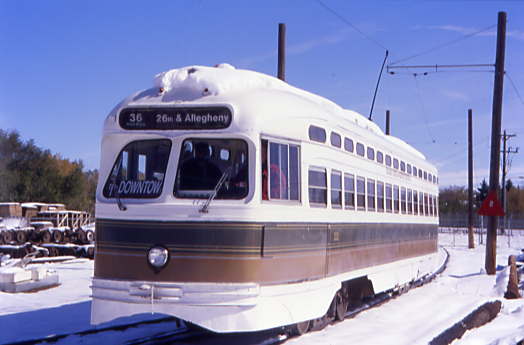
Chris Park and I parked and walked into the former Rock Island roundhouse and offices of the Pikes Peak Historical Street Railway. In the office I introduced us to Howard Noble, Vice President and Executive Director of the Foundation and started our tour in the lobby with him giving us a very complete history and goals of the operation. The plan is to build from here along the Joint Line down to the former station downtown.
Colorado Springs & Interurban RailwayThe Colorado Springs and Interurban Railway was an electric trolley system in the Colorado Springs, Colorado that operated from 1902 to 1932. The company was formed when Winfield Scott Stratton purchased Colorado Springs Rapid Transit Railway in 1901 and consolidated it in 1902 with the Colorado Springs & Suburban Railway Company. It operated in Colorado Springs, its suburbs and Manitou Springs.
BackgroundThe Colorado Springs and Manitou Street Railway began horsecar trolley service in 1887. It ran between the Colorado Springs business district and Colorado College. The following year the route extended north and west with a total of ten horse-drawn trolleys. The Colorado Springs Rapid Transit Railway, chartered in 1890, bought the system and established the first electric trolley line to Manitou Springs in October 1890, as they transitioned from horse-drawn to electric trolleys. In 1898, trolleys ran west to Colorado City, east to Knob Hill, to Cheyenne Park, and connected with the Atchison, Topeka and Santa Fe Passenger Depot. With the additional destinations, there were 44 electric trolleys in 1900.
Interurban Railway CompanyService ran to a trolley park beyond Boulevard Park in 1903. The north/south main line provided service from a loop at the town of Roswell. Colorado Springs and Interurban Railway ridership peaked in 1911 and within three years it began to suffer financially as automobile ownership increased. By 1916, its offices were located at 530 South Tejon. At that time there were separate cars that ran from the Main Post Office and Federal Courthouse to the Printer's Home. The east/west mainline extended from Manitou's Iron Springs neighborhood eastward through Garden of the Gods Balanced Rock Station in 1916. In 1916, the system had a power house building at 205 Rio Grande West. It served Colorado Springs, Old Colorado City, Manitou Springs, Ivywild and Roswell over 38 mile of track with 56 motor cars and 13 trail cars in 1917.
Over the years, service ran east to the North Colorado Springs suburb and southward from the ATSF/Rock Island railroad bridge through the city to the Ivywild and Broadmoor suburbs, where the Cheyenne Mountain Country Club was along the Cheyenne Canon street car line and the terminus. It also ran to Broadmoor Park and adjacent to Stratton Park at the entrances to the North and South Cheyenne Canyons. A north/south branch line on Spruce and Walnut streets extended from Yampa street southward to Huerfano Street.
Buses began replacing the system's railcars in 1931 and the last electric tram ran on April 30, 1932. In the mid 1930s, the Works Progress Administration removed most of the street car rails. The Colorado Springs & Interurban power house site at the northwest corner of South Sierra Madro and Las Animas streets remains an electrical power station (now of Colorado Springs Utilities).
Historic propertyWinfield Scott Stratton ordered streetcars for the Colorado Springs & Suburban Railway in 1901. It was the first set of cars purchased by Stratton and they were outfitted with safety features, like the retractable Narragansett steps, retractable windows that could be adjusted in transit, and had separate non-smoking and smoking sections. It was a step in the transition from wood to steel framed cars and used the Brill convertible design. Colorado Springs & Interurban Railway Streetcar No. 48, the only remaining streetcar from that order, is listed on the Colorado State Register of Historic Properties.
The Pikes Peak Historical FoundationThe Pikes Peak Historical Foundation formed in 1983, with publication of Pikes Peak Trolleys by Morris Cafky and John H. Haney to preserve the history of the street railways in the Colorado Springs area. In 1990, Mr. Rex Dodson donated Colorado Springs & Interurban Railway Number 59, our first streetcar. In 1994, we moved into the former Chicago, Rock Island, and Pacific roundhouse built in 1888. When Southeastern Pennsylvania Transit Authority PCC cars became available, plus Chicago Transit Authority Clark B3 trucks to convert the Pennsylvania gauge cars to standard gauge, our mission expanded to build a streetcar line from downtown Colorado Springs to Manitou Springs. The voters approved a charter to build the line and funds were raised for a feasibility study.
We leased former Fort Collins Municipal Railways 22 and former Los Angeles Railways 3101 from the Rocky Mountain Railroad Club adding to our fleet. IBEW Local No. 113 and the Electrical Contractors Association donated $50,000 for restoration of the Birney. Negotiations with the City resulted in the new Colorado Avenue bridge being built to accommodate up to a 100,000 pound rail vehicles with lamp posts capable of supporting a catenary. The Manitou line reached the actual engineering work.
Everything had moved forward until a combination of items halted the effort. The proposed line on Colorado Avenue went under I-25. When rebuilding I-25 in the area commenced Colorado Department of Transportation understandably did not want a 600 volt trolley wire in their construction site. Underground power and communication vaults were also in the way of one of the tracks. Then came a push for us to replace the old sewer line under Colorado Avenue. Potential donors were not going to contribute to that work.
Looking for alternatives a transit engineering firm offered pro bono to help us construct a demonstration line along I-25. That effort halted when the Union Pacific announced that not even the Regional Transportation District in the Denver area would be permitted to build near the railroad right-of-way in the future. Our current site surrounded by railroad right-of-way precluded being able to build out to the city streets. Meanwhile acceptance of streetcars returning to American cities increased. A number of lines proved the benefits to restoring the economic viability of areas.
Photographs of trolleys that once served Colorado Springs, including Car 22.
The new home for Car 59.
Pictures of Car 22. After we saw all the indoor displays, we went to the roundhouse to see the collection of cars under restoration.
Colorado Springs and Interurban streetcar 59, built by the LaClede Car Company in St. Louis in 1901. It is one of two remaining original CS&I cars; this was the first car in the Museum's collection, acquired in 1982.
Pikes Peak Historical Street railway streetcar 135, ex. Rocky Mountain Railroad Club 22 1951-1997, nee Fort Collins Municipal Railway 22, built by American Car Company in 1919. Fort Collins stopped streetcar service in 1951; it was the last city to operate Birney Safety cars.
The On Track One and On Track 2 project board, after which we went outside.
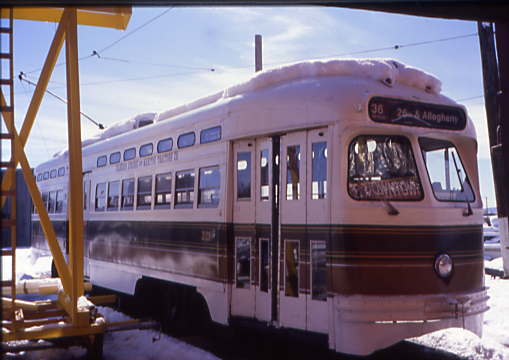

Pikes Peak Historical Street Railway PCC car 2129, ex. South Eastern Pennsylvania Transportation Authority 2129 1968-1995, nee Philadelphia Transportation Company 2129 1948-1968, built by St. Louis Car Company in 1948.
Museum view of the two-stall Chicago, Rock Island and Pacific roundhouse with PCC car 2129 in front. Rides are offered in this car.
Southern Pacific baggage car 6777 built by Pacific Car and Foundry in 1962, currently painted as Rock Island 4363, which houses a very fine Rock Island museum.
An overview of the museum area.
Denver and Rio Grande Western box car 64084 built by American Car and Foundry in 1956.
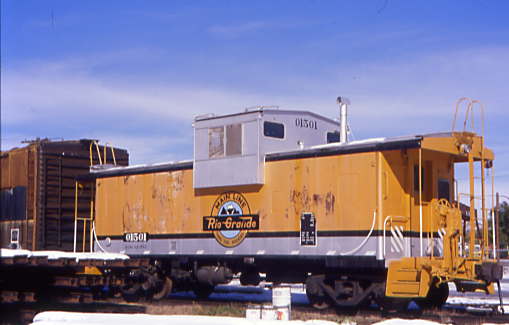
Denver and Rio Grande Western caboose 01501 built by International Car in 1966.
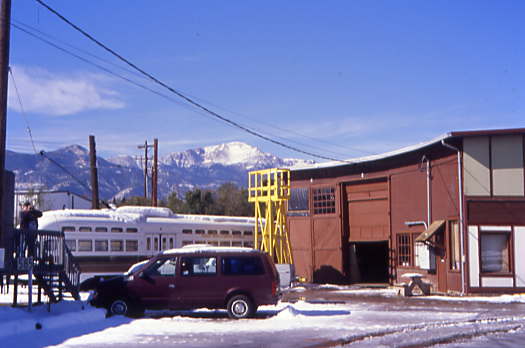
Pikes Peak stands guard over this unique museum and operation.
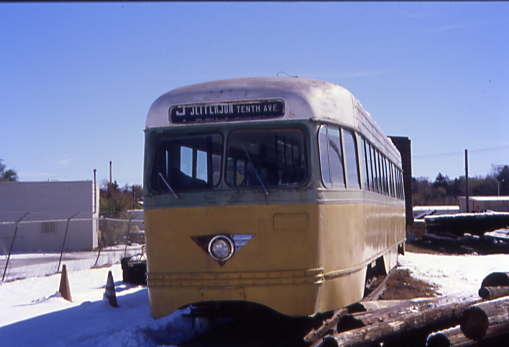
Pikes Peak Historical Street Railway PCC car 3101, ex. Rocky Mountain Railroad Club 3101 1969-2006, exx. Gold Campo Railway and Museum 3101 1965-1969, exxx. Los Angeles Metropolitan Transit Authority 3101 1958-1963, exxxx. Los Angeles Transit Lines 3101 1945-1958, nee Los Angeles Railway 3101 1943-1945, built by St. Louis Car Company in 1943. It is one of only two War Babies still in existence; the other, 3100, operates at the Orange Empire Railway Museum in Perris, California.

Several more PCC cars were sitting in the snow, awaiting their turn in the shop.
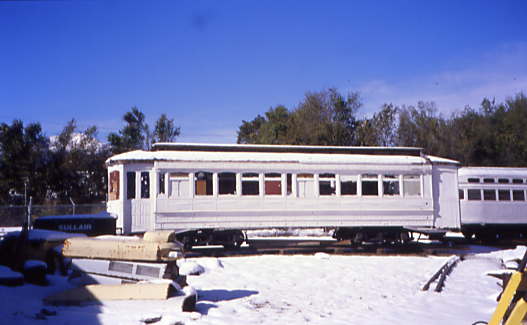
Pikes Peak Historical Street Railway streetcar 48, nee Colorado Springs and Interurban 48 1901-1932 built by J.G. Brill in 1901. It was part of an order for five convertible streetcars and they were rebuilt in 1908-1909 to better survive the Colorado Springs climate. All of the cars remained with the company until it shut down in 1932. Number 48 was sold and turned into a house for the next 70 years before being purchased by the museum and moved to the car house. It is one of two surviving CS&I cars, both at the museum and the only surviving Brill convertible.
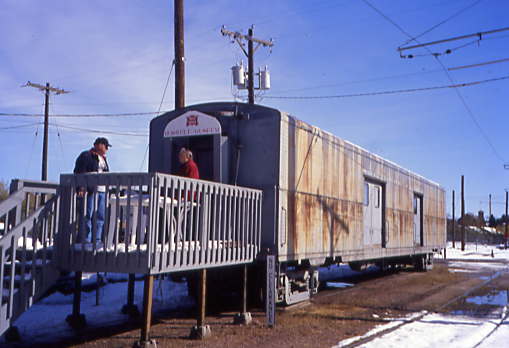
Chris and Howard about to enter Southern Pacific baggage car 6777.
Beside the baggage car was Milepost 585 sign from Kansas City, or the most western Rock Island milepost.
I went inside the baggage car and was treated to the most complete Rock Island Railroad collection that I had come across.

Howard then offered us a ride and while he turned on the electricity, I continued my photography discovered that the group also has a wire car.
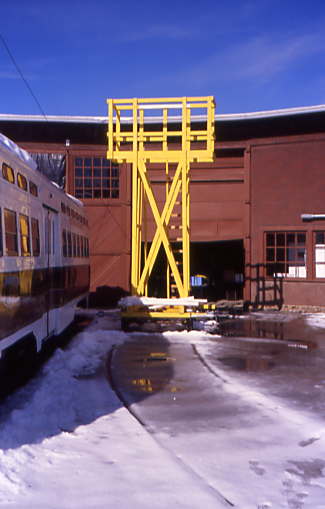
The overhead wire car.
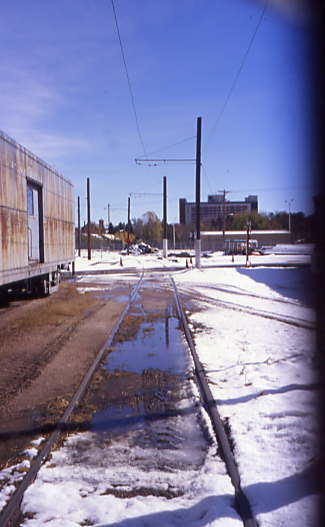
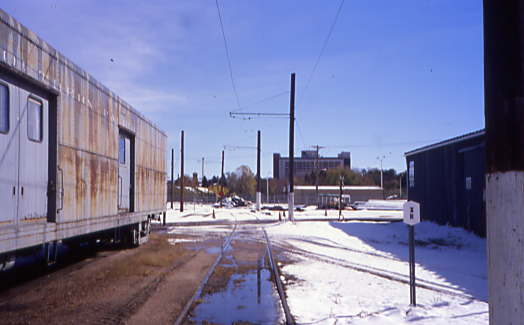
I looked at our route then went to the car to change film before boarding PCC 2129 for a ride down some former Rock Island rails.
The interior of PCC car 2129. Our ride would take us along 600 feet of track and return.
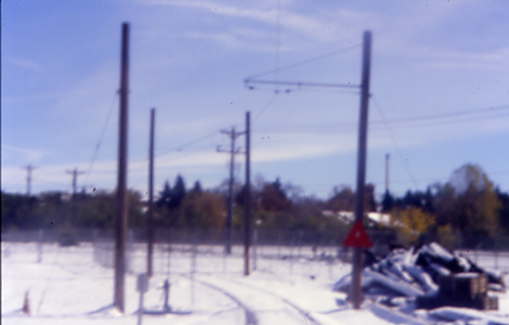
We started going backwards down the tracks and had to stop until I went back to make sure the grade crossing was clear, then reached the end of track and stopped.
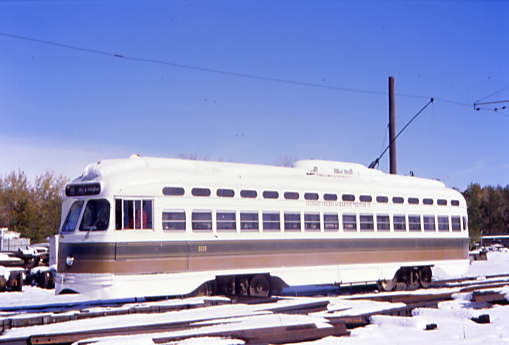

I asked to detrain and here is PCC 2129 at the end of track. I climbed back inside.
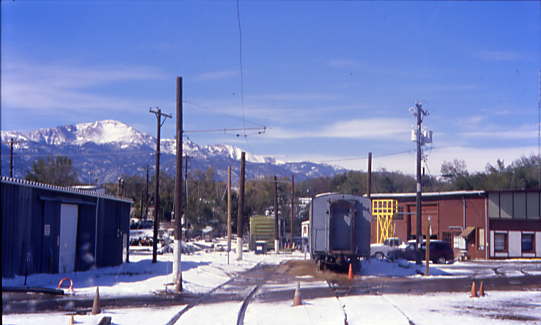
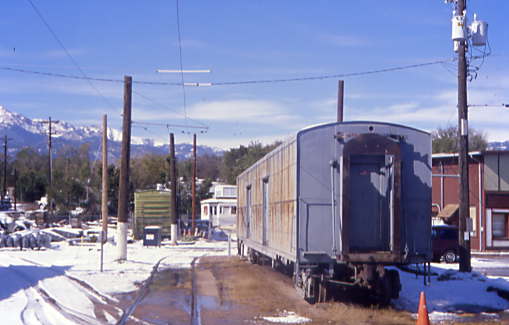

Views from the return trip. At the end of the run, we thanked Howard for a great visit and returned to the car for the drive to Manitou Springs and our next rail adventure.
| RETURN TO THE MAIN PAGE |